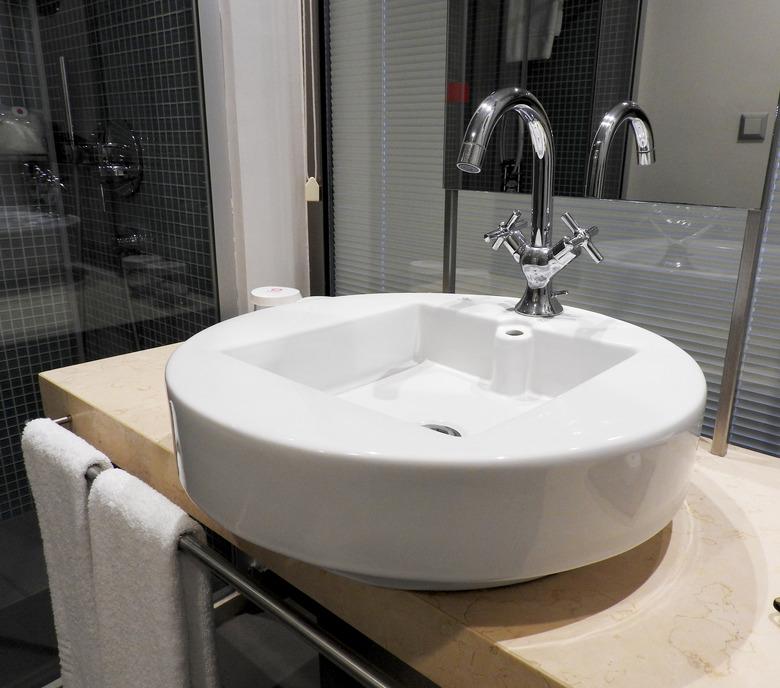What Are The Holes On The Side Of A Sink Drain For?
A bathroom sink isn't serviceable until you install the drain assembly, and the first step in that process is to drop in the drain flange, which is the metal part that gets attached to the sink and is in turn attached to a straight length of pipe known as the tailpiece. You may be puzzled by the fact that the flange has a series of holes on the side of the sink drain, but there's no need to scratch your head because the explanation is simple: They are overflow holes.
Tip
The holes in a bathroom sink flange are there to allow water from the overflow holes in the sink to drain.
Drain Flange Holes Prevent Overflow
Bathroom sinks are designed with overflow holes to avert the disaster of a sink overflow because someone left the water running with the sink stopper closed. Sinks are designed with a double layer of porcelain, ceramic or some other material that incorporates a passage from the overflow holes — which are usually on the front or back of the sink just under the rim — to the drain. When the water level reaches the overflow hole, it spills into this passage and goes down the drain.
If the drain flange were a solid piece of metal with no holes, the water wouldn't have anywhere to go, and it would back out of the overflow hole in the sink and continue its journey to the floor. Instead, the drain flange usually has three or four large openings evenly spaced around the flange body that allow the water to pass through. They are designed to service the overflow passages inside the sink and not to protrude from the bottom of the sink, so there's no danger that they will ever leak.
Aligning the Drain Flange
Fortunately, you don't have to line up the overflow holes on the flange with the overflow passageways inside the sink, so there's one less thing to think about when doing a sink installation or changing a drain. The area around the drain opening inside the sink is hollowed out, so water flowing from the sink's overflow holes will flow around the flange until it finds one of the openings.
To install the drain flange, simply pack the underside of the lip with plumbers' putty, drop it into the sink opening and tighten on the retaining nut from underneath the sink using adjustable joint pliers. Some flanges come with a tailpiece, but if yours doesn't, you screw on a tailpiece, tighten it by hand and connect it to the P-trap to complete the drain installation.
Some Sinks Lack Overflow Holes
Some sinks, especially metal ones, are too thin to have overflow passages inside them, and when there are no overflow passages or overflow holes, you don't need a drain flange with holes either. You should instead install a drain flange without holes because if you use one with holes, the drain will leak.
It's worth noting that the overflow holes on a sink serve two purposes. One is to prevent the sink from overflowing, and the other is to admit air into the drain, which helps the sink to drain more quickly. That doesn't necessarily mean a metal sink without overflow holes will drain more slowly. As long as the sink drain is properly vented, you probably won't be bothered by slow drainage at all.
